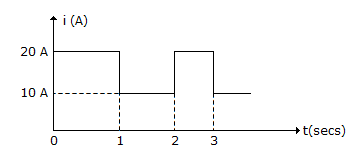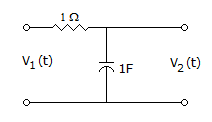Electronics and Communication Engineering - Networks Analysis and Synthesis
Exercise : Networks Analysis and Synthesis - Section 9
- Networks Analysis and Synthesis - Section 14
- Networks Analysis and Synthesis - Section 27
- Networks Analysis and Synthesis - Section 26
- Networks Analysis and Synthesis - Section 25
- Networks Analysis and Synthesis - Section 24
- Networks Analysis and Synthesis - Section 23
- Networks Analysis and Synthesis - Section 22
- Networks Analysis and Synthesis - Section 21
- Networks Analysis and Synthesis - Section 20
- Networks Analysis and Synthesis - Section 19
- Networks Analysis and Synthesis - Section 18
- Networks Analysis and Synthesis - Section 17
- Networks Analysis and Synthesis - Section 16
- Networks Analysis and Synthesis - Section 15
- Networks Analysis and Synthesis - Section 1
- Networks Analysis and Synthesis - Section 13
- Networks Analysis and Synthesis - Section 12
- Networks Analysis and Synthesis - Section 11
- Networks Analysis and Synthesis - Section 10
- Networks Analysis and Synthesis - Section 9
- Networks Analysis and Synthesis - Section 8
- Networks Analysis and Synthesis - Section 7
- Networks Analysis and Synthesis - Section 6
- Networks Analysis and Synthesis - Section 5
- Networks Analysis and Synthesis - Section 4
- Networks Analysis and Synthesis - Section 3
- Networks Analysis and Synthesis - Section 2
46.
For the wave shown in figure, the average value is


Answer: Option
Explanation:
Average value = 10 + 0.5 x 10 = 15 A.
47.
The dc voltage applied to an R-L series circuit is suddenly changed from V1 to V2. The expression for transient current is
Answer: Option
Explanation:
The final steady state current is  and transient term must depend on both V1 and V2.
and transient term must depend on both V1 and V2.
48.
One ampere means the flow of
Answer: Option
Explanation:
As per definition one ampere means 1 coulomb per second.
49.
For the following circuit a source of V1(t) = e-2t is applied, then the resulting response V2(t) is given by


Answer: Option
Explanation:
 .
.
50.
When R and C are connected in parallel, phase angle of Y is positive.
Answer: Option
Explanation:
I = YV. Since I leads V, phase angle of Y must be positive.
Quick links
Quantitative Aptitude
Verbal (English)
Reasoning
Programming
Interview
Placement Papers



